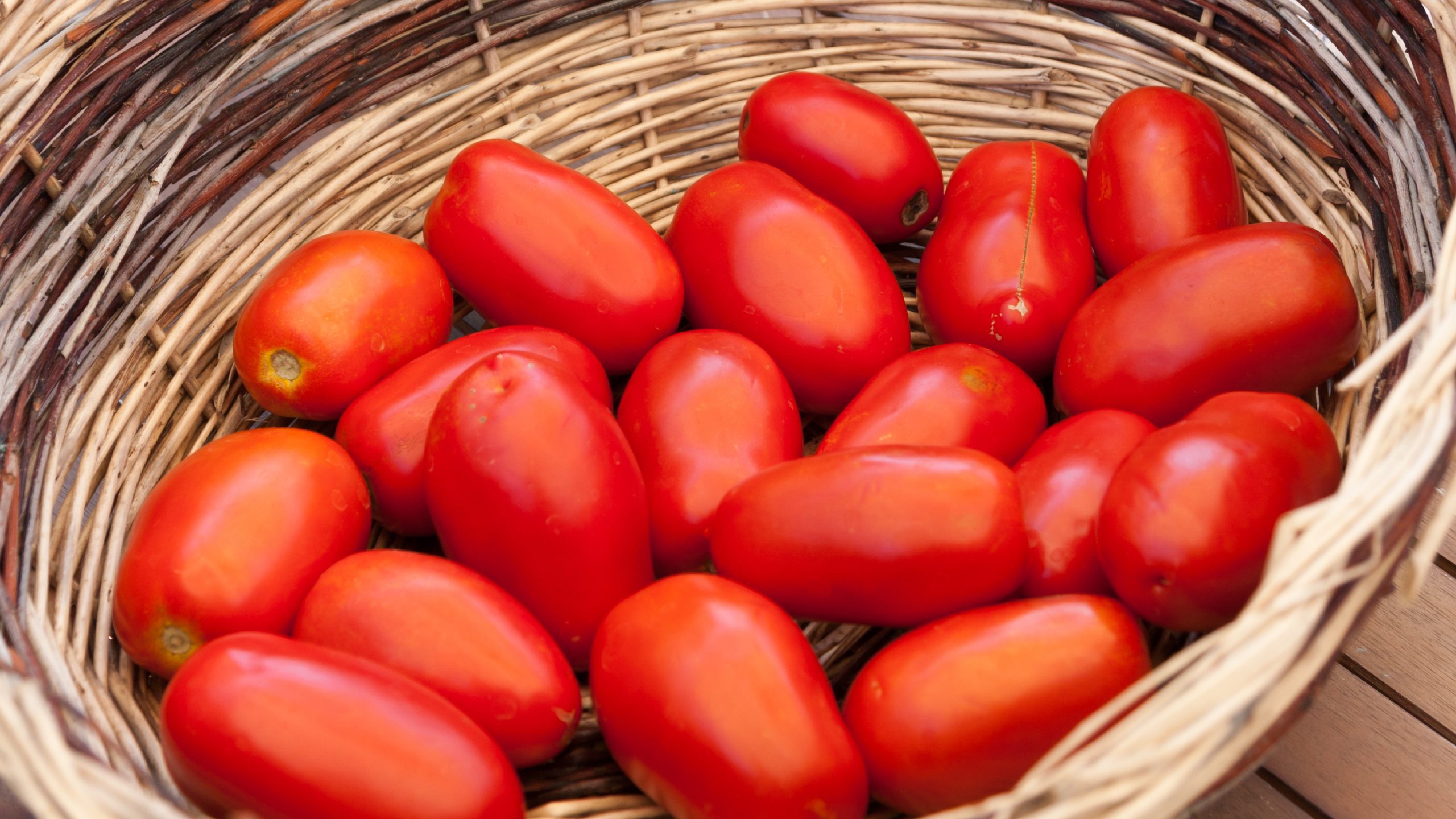San Marzano tomatoes are one of Italy's most famous fruits. You’ve most likely come across them in grocery stores in the United States where they’re sold in large cans bearing an image of the vibrant red and oblong-shaped tomato. You’d be surprised to learn that the San Marzano tomatoes sold in grocery stores in the country, however, aren’t even really San Marzano tomatoes. That’s because they’re only produced in a small area in the southern Campania region, and the U.S. is not as strict as Europe when it comes to incorrectly labeling a product.
But first, let us understand what makes San Marzano tomatoes so special. For starters, they’re a species of plum tomatoes, which normally have fewer seeds than typical tomatoes. This means that the San Marzano tomato has a thicker skin, and a less watery interior, making them ideal for tomato sauce. They also have a sweeter and less acidic flavor, which when added to a Neapolitan Margherita pizza, provides a pleasantly delicate balance between salty and sweet ingredients.
San Marzano tomatoes are exclusively grown in the Agro Nocerino-Sarnese, an agricultural area situated in the Sarno River valley between Naples and Salerno. Within this area, there are 41 towns, one of which is San Marzano sul Sarno, which, as one can guess, is from where the San Marzano tomato derives its name. The Sarno River valley lies in the shadow of Mount Vesuvius, an ancient and historically active volcano whose explosions have flushed the surrounding soil with phosphorus and potassium, making them incredibly fertile. This volcanic soil, combined with southern Italy’s hot and humid climate, produces tomatoes that are sweeter and less acidic in flavor. It is for these reasons that the Agro Nocerino-Sarnese area is the ideal and only place where San Marzano tomatoes can grow and thrive.

In 1996, the Italian government recognized the culinary delight that are San Marzano tomatoes and awarded them the official Denominazione d’Origine Protetta (DOP), a Protected Designation of Origin, a coveted European label that guarantees a product was grown and cultivated in as Pacific, geographic place. DOPs have been handed out to other famous Italian products including Mozzarella di Bufala, Parmigiano Reggiano, Prosciutto di Parma, and more. This certification requires that all products are stamped with a DOP label to ensure their authenticity.
European laws surrounding DOPs are much stricter than in the United States, which will often unscrupulously label a product as a San Marzano tomato when in reality they don’t even hail from the Agro Nocerino-Sarnese area. In fact, Tasting Table estimates that only five percent of San Marzano tomatoes sold in the United States are authentic.
Even though San Marzano tomatoes are delicious in a tomato sauce or even eaten as they are fresh off the vine, they’re most famously tied to the Neapolitan Margherita pizza. The Italian Standardization Body and the Association Verace Pizza Napoletana specifically outline that only two tomatoes can be used for a Neapolitan pizza: Pomodorino Vesuviano, and San Marzanos.
Asia London Palomba
Asia London Palomba is a trilingual freelance journalist from Rome, Italy. In the past, her work on culture, travel, and history has been published in The Boston Globe, Atlas Obscura, The Christian Science Monitor, and Grub Street, New York Magazine's food section. In her free time, Asia enjoys traveling home to Italy to spend time with family and friends, drinking Hugo Spritzes, and making her nonna's homemade cavatelli.

